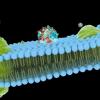Turnbuckle.... Did your doctors diagnose you as having Myasthenia gravis based on your statin use?
My reading of the literature says that's what you had that vanished... Right? Wrong?
I'm thinking through explanations based on my last serious post... Have you posted everything you've noticed that has changed? YOUR experience is the exoerience, so far, that any explanation must account for...
Thx
I believe that at least 80% of the scientific knowledge required to explain this buckyball study result already exists in the literature. But the literature is vast and no one person has a handle on all of it. I believe, however, that we, in this forum, have "collective intelligence" about that literature and if we're willing and able to leverage each other's knowledge, I think we can figure out what 2 or 3 of the best possible explanations of the study result are. I'd like that to happen and I'm willing to put time and energy into putting the puzzle pieces I know something about on the table...
Oops... I misspoke. I ALREADY did put a very significant puzzle piece on the table. It's that Vagus/CAIP/HRV literature plus the Olive Oil triggering the Vagus content I just posted yesterday...
So I'm going to continue to follow the trail of evidence that seems appropriate. I will TRULY APPRECIATE specific and detailed feedback about what I describe here, especially when I get off track... Hit me in the head if I'm going further than the evidence supports...
----------------------------------------------------
I believe there are insights into an explanation of the study from Turnbuckle's health turn around. I'd like to focus on it a bit assuming he doesn't mind. I don't think he minds. He volunteered his info and his "sonny... snake oil.." joke a few pages back let us all know he has a sense of humor and doesn't take himself or us too seriously. Still, he's doing this batsh*t crazy buckyball experiment on himself... He's a serious guy. 8-)
--------------------------------------------------------------------
Background...
Statins may aggravate myasthenia gravisFrom Wikipedia... Myasthenia gravis (from Greek μύς "muscle", ἀσθένεια "weakness", and Latin: gravis "serious"; abbreviated MG) is an autoimmune neuromuscular disease leading to fluctuating muscle weakness and fatiguability. It is an autoimmune disorder, in which weakness is caused by circulating antibodies that block acetylcholine receptors at the postsynaptic neuromuscular junction, inhibiting the excitatory effects of the neurotransmitter acetylcholine on nicotinic receptors throughout neuromuscular junctions.
I don't have time to find the best study, but there are quite a few studies showing that some cases of myasthenia gravas involve a "leaky gut."
--------------------------------------------------------------------
Let's think this out... I'm not going to repeat or summarize the content of my last post here about the Cholinergic Anti-Inflammatory Pathway (CAIP). I'm assuming everyone's up to speed on it. You should be if you're interested in explanations of the study result.
Assuming my hypothesis that C60 acts to strip methyl groups from the mitochondrial DNA is correct...
Hypothesis #1
- The Olive Oil solvent would have triggered CCK receptors stimulating the Vagus Nerve in the gut.
- The C60s have interacted with damaged CCK receptors (or other elements closely related to it) and stripped the methyl groups from it? The important net result: A resetting of the mitochondrial DNA relating to Vagus Nerve sensitivity in the gut.
- That would also have released acetylcholine via the CAIP.
Alternatively... Hypothesis #2
- The C60s did a reset of methyl groups but on the Acetylcholine Nicotinic Receptors (subunit 10?) causing the Myasthenia Gravas.
- And increased acetylcholine Nicotinic Subunit 7 release somehow impacted the damaged acetylcholine receptor responsible for Myasthenia Gravas.
- I'm less clear about this one... Does it mean anything that it's the Acetylcholine Nicotinic Alpha 7 subunit that is implicated in the CAIP and that it's Acetylcholine Nicotinic Alpha 10 which is implicated in Myasthenia Gravas. Dunno... Just talking out loud...
--------------------------------------------------------
If you're truly familiar with the literature I posted yesterday, you'll immediately notice that Hypothesis #1 is actually quite profound and could be a very important element of a plausible explanation of the doubling of life span study result...
A resetting of the Mitochondrial DNA in the gut related to our Innate Anti-Inflammatory mechanisms resets our ability to manage the auto-immune diseases (like cancer) which, increasingly, knock us off as we age... It seems to me to be a big deal...
And BTW, this idea of a resetting of that mechanism in the gut suggests that Turnbuckle has proposed another great idea, namely, that periodic resets by means of Buckyball/Olive Oil could have profound impacts on life extension...
Thoughts? What did I get right? What did I get wrong?
Oh, I forgot, one last thing...
I seriously wish this forum offered the emoticon which shows the person munching on some popcorn and watching the thread.

This is one of the more interesting threads on this forum, IMHO..........
malbecman... put down the popcorn, wipe the butter off your fingers and get yourself on over to google scholar. we're counting on you for some key piece of evidence related to the explanation... 8-)
Edited by wccaguy, 26 May 2012 - 03:17 PM.
) but ...:































 This topic is locked
This topic is locked























